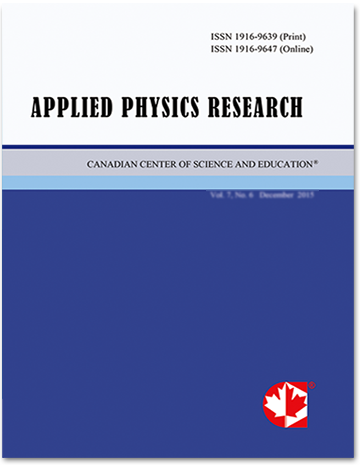Geoeffectiveness of X and M Class Solar Flares (SF) and Associated Halo Coronal Mass Ejections (CMEs)
- Longo Wilfried Sanon
- Abidina Diabate
- Emmanuel Wambi Sawadogo
- Jean Louis Zerbo
Abstract
We studied the geoeffectiveness, the angular width, and the association with solar flares of classes X and M for a set of 262 halo-type coronal mass ejections (CMEs) during solar cycles 23 and 24, covering the period from 1996 to 2019 inclusive. We compiled the minimum Dst values that occurred within 1 to 5 days after the CME onset. We compared the distributions of these Dst values for the following subsets of halo-type CMEs: narrow CMEs (angular width < 60°), medium CMEs (angular width between 60° and 120°), and wide CMEs (angular width > 120°). A halo-type CME is defined as geoeffective if followed by a Dst value lower than -50 nT; moderately geoeffective if the Dst is between -50 nT and -100 nT; strongly geoeffective with Dst values between -100 nT and -200 nT; and severely geoeffective if followed by a Dst value lower than -200 nT (this is already defined in the method section). The analysis of the 262 coronal mass ejections (CMEs) reveals that 14.1% are narrow CMEs, with 11.1% associated with M-class flares and 3% with X-class flares. Of the narrow CMEs, 5.3% were geoeffective. Medium-width CMEs account for 22.9%, also mostly linked to M-class (13.7%) and X-class (9.2%) flares, with 8% geoeffectiveness. Wide CMEs dominate with 63%, with 42.4% originating from M-class flares and 20.6% from X-class flares. Among the wide CMEs, 29.8% were geoeffective. Overall, 43.1% of the CMEs were geoeffective, with a greater contribution from M-class flares. During cycle 23, 48% of M-class flares accompanied by halo CMEs were geoeffective, compared to 62.7% for X-class flares. In cycle 24, the geoeffectiveness of M-class and X-class flares accompanied by halo CMEs was 26.3% and 23.5%, respectively.
- Full Text:
 PDF
PDF
- DOI:10.5539/apr.v17n1p198
Journal Metrics
Google-based Impact Factor (2017): 3.90
h-index (November 2017): 17
i10-index (November 2017): 33
h5-index (November 2017): 12
h5-median (November 2017): 19
Index
- Bibliography and Index of Geology
- Civil Engineering Abstracts
- CNKI Scholar
- CrossRef
- EBSCOhost
- Excellence in Research for Australia (ERA)
- Google Scholar
- Infotrieve
- LOCKSS
- NewJour
- Open J-Gate
- PKP Open Archives Harvester
- SHERPA/RoMEO
- Standard Periodical Directory
- Ulrich's
- Universe Digital Library
- WorldCat
Contact
- William ChenEditorial Assistant
- apr@ccsenet.org
